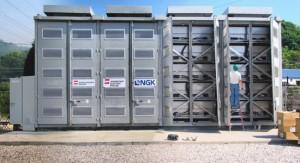GridLarge-scale power storage for the energy grid
The sun does not always shine and the wind does not always blow; Stanford University researchers have used nanoparticles of a copper compound to develop a high-power battery electrode that is inexpensive to make, efficient and durable that it could be used to build batteries big enough for economical large-scale energy storage on the electrical grid

Technologies are being tested to provide power during peak demand // Source: energycircle.com
Stanford University researchers have used nanoparticles of a copper compound to develop a high-power battery electrode that is so inexpensive to make, so efficient and durable that it could be used to build batteries big enough for economical large-scale energy storage on the electrical grid — something researchers have sought for years.
The reason why such storage devices are needed is that the sun does not always shine and the wind does not always blow — making it difficult for wind and solar power to be used on a large scale. An efficient, durable, high-power, rechargeable battery could be used to store large quantities of excess power generated on windy or sunny days until we needed it.
A Stanford University release reports that now Stanford University researchers have developed part of sucfh a battery, a new electrode that employs crystalline nanoparticles of a copper compound.
In laboratory tests, the electrode survived 40,000 cycles of charging and discharging, after which it could still be charged to more than 80 percent of its original charge capacity. For comparison, the average lithium ion battery can handle about 400 charge/discharge cycles before it deteriorates too much to be of practical use.
“At a rate of several cycles per day, this electrode would have a good 30 years of useful life on the electrical grid,” said Colin Wessells, a graduate student in materials science and engineering who is the lead author of a paper describing the research, published this week in Nature Communications.
“That is a breakthrough performance — a battery that will keep running for tens of thousands of cycles and never fail,” said Yi Cui, an associate professor of materials science and engineering, who is Wessell’s adviser and a coauthor of the paper.
The electrode’s durability derives from the atomic structure of the crystalline copper hexacyanoferrate used to make it. The crystals have an open framework that allows ions — electrically charged particles whose movements en masse either charge or discharge a battery – easily to go in and out without damaging the electrode. Most batteries fail because of accumulated damage to an electrode’s crystal structure.
The release notes that because the ions can move so freely, the electrode’s cycle of charging and discharging is extremely fast, which is important because the power you get out of a battery is proportional to how fast you can discharge the electrode.
To maximize the benefit of the open structure, the researchers needed
